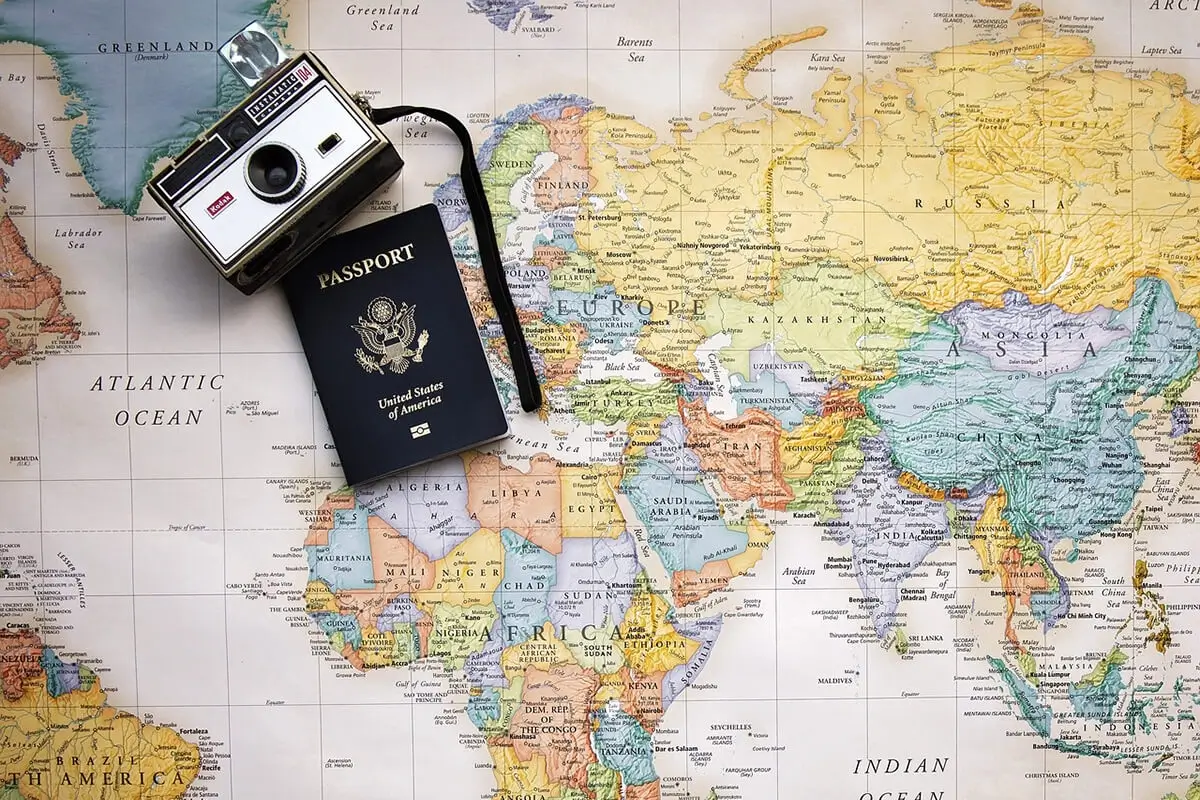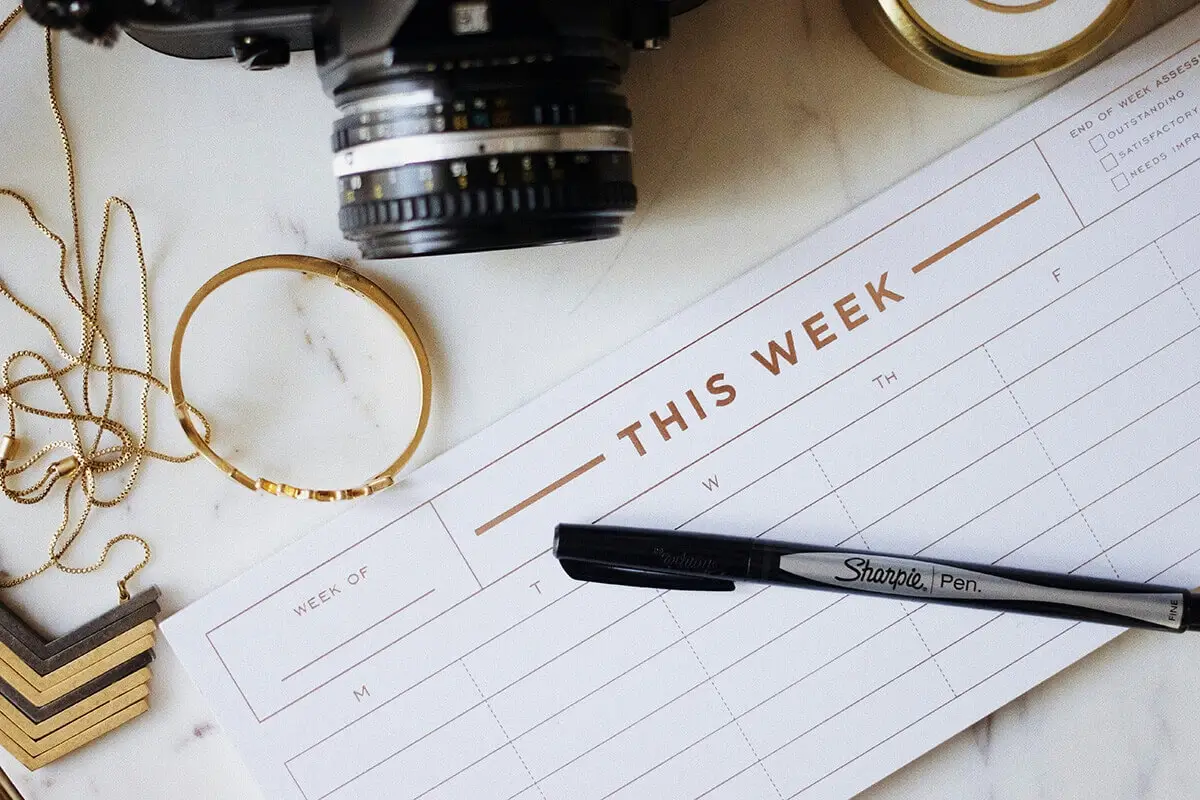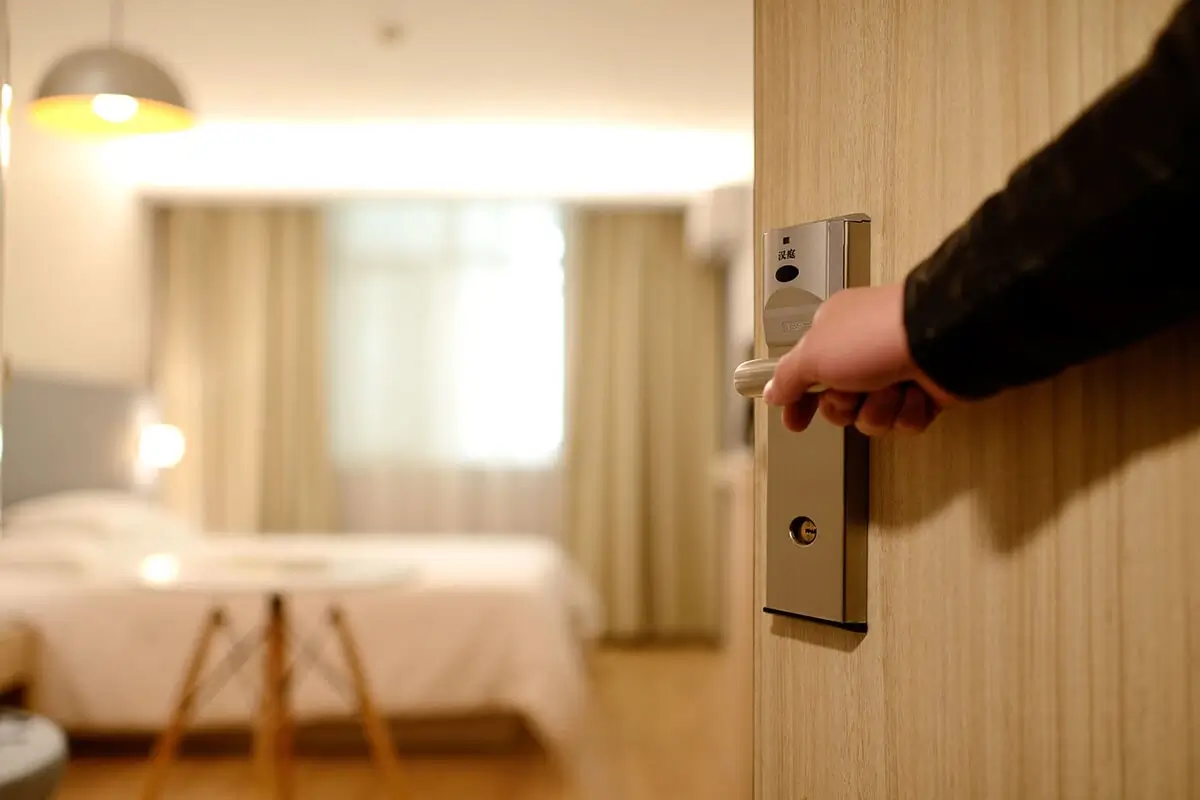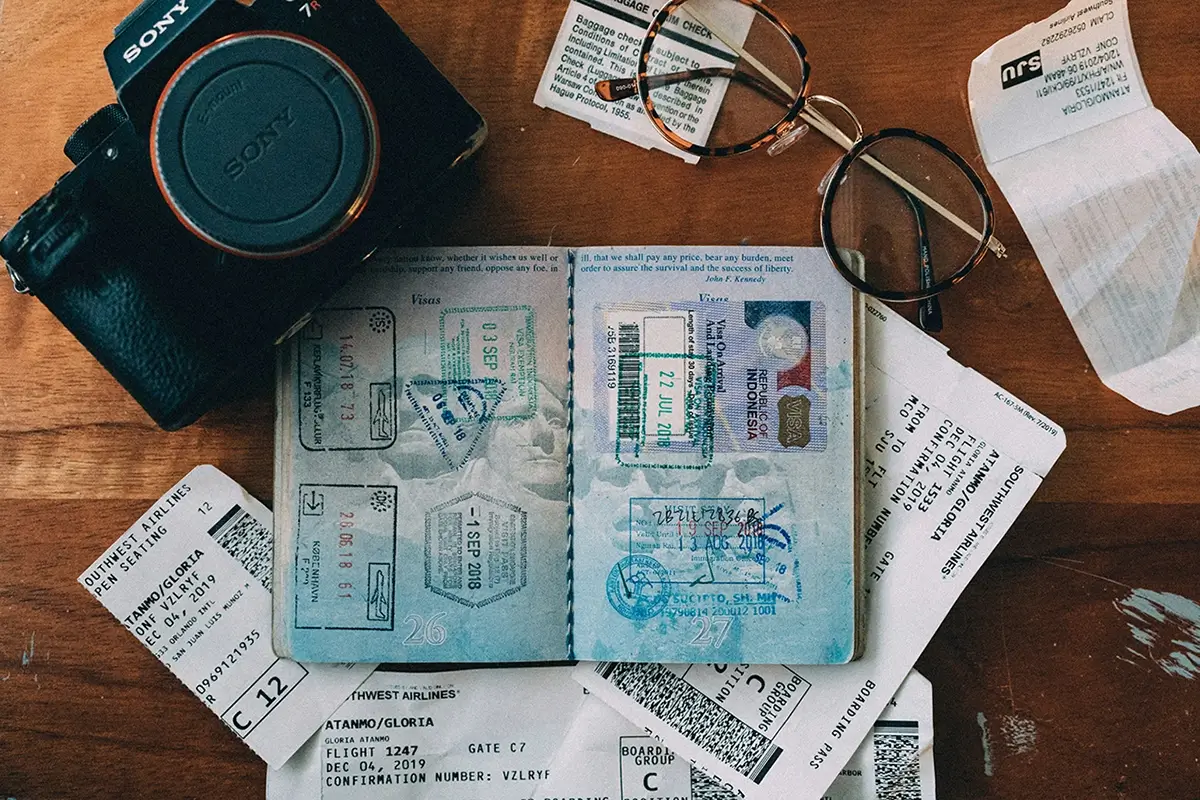Airport and Flying Travel Tips
Airports and air travel can be stressful, especially on longer international flights. You need to know the essential Airport and Flying Travel Tips.
Confined to a huge flying metal sardine can for 8+ hours- could dampen even the strongest wanderlust. Not everyone can splurge for a Business or First-Class ticket or even a Premium Economy ticket. Since we have not yet found a way to teleport ourselves to the other side of the planet, you will need to make the best out of a long-haul flight with our flying travel tips.
As any savvy frequent flyer will tell you, it’s all in the preparation. Here are our Top 16 Airport and Flying tips to prepare for your international flight and make your journey much more enjoyable.

This article may contain compensated links. See our full disclaimer here. If you purchase through any of these links, we may earn a small commission at no extra cost to you.
The commissions help us provide valuable travel tips and guides for free. Thank you!
Join the Austria Travel Planning Facebook Group
Follow us on:
16 Airport and Flying Tips for Stress-Free Travel
Contents
- Sign up to your Frequent Flyer Program
- Upgrade
- Choose your Seat
- Lounge Access
- Prepare your electronic devices
- Scan and Copy travel documents
- Pre-Flight Pamper Session
- Check-In Early
- Carry-On
- Checked Luggage
- Dress Appropriately but comfortable
- Board Early
- Prepare your Seat
- Sync your time
- Choose your meals
- Move Around
1. Sign up to your Frequent flyer program
This is my top tip. Sign up for the relevant frequent flyer program(s). Firstly, this allows you to start to earn points for free flights or upgrades. Although you may think that you will never accrue enough points – a long-haul flight (depending on cabin class) may earn you enough points for a domestic flight or upgrade.
But the main reason I recommend having a frequent flyer membership is to access the associated perks, such as free seat selection, free baggage or larger baggage allowance, priority boarding and the ability to upgrade. If you fly more frequently, you can obtain more ‘elite status’, including access to airport lounges and free upgrades.
Don’t get caught out with paying for an expensive flight to stay loyal. Most frequent flyer programs have alliances with partner airlines, so you can still earn points without sacrificing loyalty over price.
As well as earning points flying, most programs have partners where you can earn points from hotel bookings, car rentals and credit cards.
2. Upgrade – if you can afford it
But other upgrades are also beneficial. These include extended legroom, window seats, exit rows and bulkhead rows that allow for a more comfortable flight.
If you are a member of the airline’s frequent flyer program, many offer you the opportunity to pay for an upgrade to Business Class in cash and or points.
Some airlines auction off upgrades to the highest bidders, usually around 72 hours before take-off.
TIP According to experts, determine your bid by calculating the regular cost of a seat, then subtract what you paid, and aim for around 20% to 40% of that price. They also recommend offering slightly more than the minimum required bid, as most people offer the baseline amount.
For many years we ‘lived’ on two continents. With our homes in Australia and in the Austrian Alps. I became an expert at travelling 24+ hours, 15960 km from Brisbane to Munich and back twice a year.
Now, I live permanently in a ski resort in the Austrian Alps. I use my love and expertise of Austria travel to inspire people to visit Austria and to discover its magnificent cities and spectacular landscapes.
I founded Wanderlustria, the Austria Wanderlust Travel Planning website and the popular Austria Travel Planning Facebook group
JOIN HERE.

3. Choose your seat
These days the chances of asking at check-in to get an aisle seat or exit row are slim to none.
The secret to a comfortable seat (even in economy) is to do your homework and select your seats as soon as possible. Normally you can do this when you book your flight. The cheapest tickets do not come with seat selection; for long-haul flights, we always book the standard tickets with seat selection included. It is worth it for us not to lose the seat selection game and be trapped in the dreaded middle seat.
As all frequent flyers know, not all seats are created equal. Some seats have no incline, are narrower, have no actual windows, have less legroom, are in close proximity to the lavatory and galley or tend to get bumped by trollies. And it appears that not all seats are equal at the pointy end of the plane either.
SeatGuru allows you to check out the seat maps for each specific flight. The colour coding of green, yellow and red seats (from best to worst) will help you from making bad choices. The website also has reviews from other flyers on particular seats.
With this information, you will be able to identify seats with more legroom, power outlets or away from the restrooms.
Top Tips
-
-
- If you are bothered by turbulence, find a seat near the wing.
- If you like it quiet- avoid the front or back of the cabin. Families with young children are usually at the front, and the galley and lavatories tend to be at the front and back of the cabins.
- Aisle seats in the centre section mean that you tend to have fewer disturbances of fellow passengers trying to get out as they can access the aisle from the other side.
- If you do not like the seat you have been assigned, keep checking back as many airlines release some of the best seats closer to departure.
-
3. Lounge Access
If your journey includes a stopover, consider an airport lounge. What is better than resting in a comfy chair, free food and drinks (including alcohol), free internet and the ability to have a shower? Arriving at your next gate- refreshed and relaxed will make the next stage of your flight more bearable.
Even if you do not have a top-tier frequent flyer status or business/first-class tickets, there are still options available to access a lounge.
Many airports have dedicated lounges for a price. Some credit cards also offer perks, such as free airport lounge access.
How to get Lounge Access
1. Business class, first class tickets or elite frequent flyer status
2. Priority Pass- for a yearly membership fee, you can have access to over 1700 airport lounges worldwide. Some credit cards provide free Priority pass memberships. If the lounge is busy, there is normally a 3-hour time limit.
3. Buy a Day Pass. Many airport lounges offer the option to purchase a day pass. Check individual lounges for the price, and availability.
Sign up for Priority Pass Membership
5. Prepare your electronic devices
Everyone travels with a Smart phones, iPad etc. today. So make sure that your devices are ready for travel.
Entertainment: Most airlines have fantastic inflight entertainment, but when you run out of on-board entertainment options, when the inflight entertainment is not non-existent or does not work or for the long hours of layover in the airport- make sure you download games, music and e-books to your device.
Airlines and Airports App. Most airlines have smartphone apps with features that provide updates on flight status and notify you about delays and gate changes. Using the apps, you are able to check in, access boarding passes, manage booking, including seat selection and meal requests, book flights, and access frequent flyer accounts.
Navigating the airport can be difficult at the best of times. Most airports have apps that have information on shops and restaurants, maps of gate locations as well as offering free WiFi access.
TOP TIP: Do not forget to fully charge all your electronic devices and bring the chargers in your carry-on luggage. We also recommend bringing a portable charger (ensure that the lithium battery in it is airline-compliant).
6. Scan and copy travel documents
Before you depart, copy and scan all important travel documents, including passports, visas, boarding passes, ID, driver’s license and hotel confirmations. Everyone travels with Smart Phones and most tickets can be uploaded to your device. But if your device is without charge or the Wi-Fi does not work- you may not be able to access your tickets.
Carry one copy in your carry-on luggage, email the files to yourself and/or store them in the cloud. If there are any problems at check-in, your chances of being delayed will be minimised. It is also a great idea to leave a copy of your documents, at least of your itinerary, with family or a friend at home.
7. Pre-flight pamper session
It goes without saying, but the evening before, try to get a good night’s sleep. Most expert frequent flyers try to squeeze in a session at the gym or a jog- the day before. A pre-flight session will relax you, and you will have a better chance of deep sleep.
The day before or the morning of the flight, set aside a few hours for some pampering. Head off the dehydrating effects on your skin. Run a nice bath with a soothing bath bomb, exfoliate and moisturise. Don’t forget your hair. Prevent frizzy and dull hair by using a deep conditioner.
8. Check-in Early
One of the worst things that takes the joy out of travelling is when you arrive at the airport to find a long line of passengers at the counter.
Avoid the lines by completing online check-in.
Most airlines allow online check-in 24 to 48 hours prior to your departure.
At this point, there may also be a chance to get a better seat, choose your flight meal and other perks.
For international flights, you may still need to go to the online check-in counter, but this line always moves quickly.
Depending on the airline and flight, you may even be able to tag your bags and drop them off at the online check-in counter.
Now you can calmly (and hopefully quickly) make your way through security and enjoy a drink airside.
9. Plan your carry-on
If you are planning on travelling with carry-on only, ensure that you check ALL the airlines that you are flying for their carry-on policies.
Most European, Australasian, Asian and Middle Eastern Airlines have strict size and weight -between 8-12kg (17.5 to 26.5 lbs) -restrictions. This has caught out many visitors travelling from the US who are used to unlimited size and weight for carry-on luggage. Luggage that does not fit the airline’s policies will need to be gate-checked, which normally comes with an expensive price tag.
For those who are checking their luggage, I recommend that you pack essentials in your carry-on to make your long-haul flight more enjoyable.
Whether you are travelling with a carry-on only or checking your luggage, it is important to start with the right carry-on bag.
Ensure that your ticket allows you to take a carry-on bag and the size dimensions.
Some European budget airline saver tickets only allow for a small handbag, and a carry-on bag or backpack incurs extra charges.
We recommend using a soft carry-on bag instead of a hard case carry-on.
-
-
- Soft bag = less weight.
- It relieves the stress of trying to stuff a large hard travel case in the already too-full overhead lockers. The last thing you need is to have to store your carry-on under the seat in front of you (giving up your valuable leg space).
-
10. Checked Luggage
Check the airline to confirm your checked bag allowance. Each airline is different, and the worst thing is to show up at the airport to learn you will be charged extra.
Also, consider where you are going.
- Will you be taking trains? If so, you need to be able to lift your luggage on and off the train (many times, there are 3-4 stairs) and lift it into the overhead racks.
- Many European cities have beautiful cobblestone streets. Beautiful to look at but a nightmare if you have to haul heavy luggage over the bumpy cobblestones.
- Check if your hotel has an elevator; many older European hotels may only have stairs.
- Will you need to store luggage in between checking into hotels/B&Bs or if you are planning short city tours. It may be more difficult and expensive to find storage options for large luggage.
11. Dress Appropriately but comfortable
The secret to surviving your long-haul flight is to dress comfortably and in layers.
My go-to travel outfit is comfortable trousers (I find jeans uncomfortable on flights), a shirt, a cardigan or jumper/sweater, a scarf, and comfortable shoes.
I also bring a pair of warm socks and a pair of pull-on shoes or ballet flats in my carry-on bag that I use on the plane.
If I am flying overnight, I pack a comfortable pair of trousers and a shirt that I change into for sleeping. This also means that my ‘travel outfit’ does not feel or smell like I have been wearing it for 2 days.
12. Board Early (if possible)
I tend to like to board as soon as possible. Having frequent flyer membership often gives you the perk of boarding early. This allows me to get to my seat easily and score the overhead locker that is close to our seat.
13. Prepare your Seat
When I board the plane, I pull out the necessities I need during the flight, then place my carry-on in the overhead bin. My necessities include a book, smart device, travel pillow, lightweight wrap (that I use as a blanket), bottle of water, snacks, moisturiser and lip balm. I have realised that I only use the majority of my toiletries- once or twice during my flight, generally after meal service and when I wake up. So I leave my toiletry bag in my carry-on.
Clean your area Airplane tray tables and seats are not regularly cleaned and have been shown to be hotspots for bacteria, so I always clean the tray table, armrests, and inflight entertainment tablet/remote with antibacterial wipes.
14. Sync the time on your watches to the destination’s time
Try to adjust your sleeping and eating patterns to your destination. So, if it is nighttime at your destination, try to catch a few hours of sleep. If it is daytime, stay awake.
15. Choose your meals and drinks wisely.
They say you are what you eat, and this is even truer on long-haul flights. Preparing for your flight starts before you board the plane. Do not be tempted to buy a fast-food meal at the departure gate. You will hate yourself later. Instead, opt for something healthy and low in salt, fat and sugar.
There has been a lot of research on long-haul flight food. And now, many airlines have improved the in-flight food options. Depending on the airline and your ticket type, you may have the option to pre-order special meals- vegetarian, gluten-free, low salt, low carbs, and children’s meals. The bonus is that your meal will be served before all the other plebs in the economy.
Try to stay away from rich carbs such as bread, rice and pasta. Reducing carbohydrate intake will reduce fluid retention and reduce bloating and feeling sluggish.
If you think that airline food is tasteless, you are right. The altitude, combined with the dry cabin air, numbs about a third of our taste buds. On top of the fact that the food has been cooked hours before your departure- it does not lead to tasty gourmet choices. Experts agree that the most edible options are stews, curries, casseroles, or fried rice dishes that can be reheated and not dried out or overcooked.
One of my favourite parts of flying is having a nice glass of wine, beer or gin and tonic. But try to limit your alcohol consumption to prevent dehydration. So, to combat dehydration, make sure you drink water with every alcoholic beverage.
Better yet, drink one litre of water every 5 hours to keep hydrated.
16. Move Around
Hours of no movement and confined to your seat will leave you feeling groggy and tired, and your feet and ankles will swell. At the very least, make a trip to the bathroom every 2-3 hours (if you have been drinking enough water- this will not be a problem). Take a short walk up and down the aisle and stretch your legs. Or try to do some stretches in your seat.
Austria Travel Tips

Airport and Flying Travel Tips
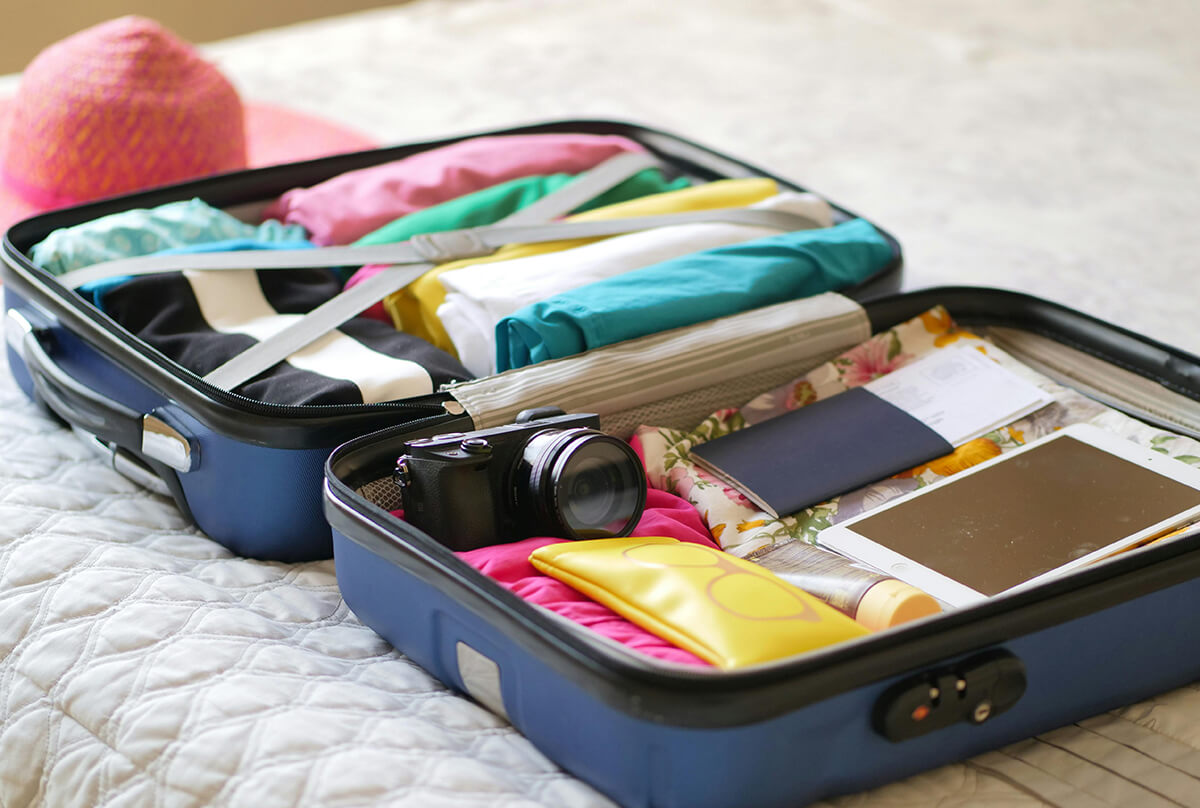
Europe Packing Tips
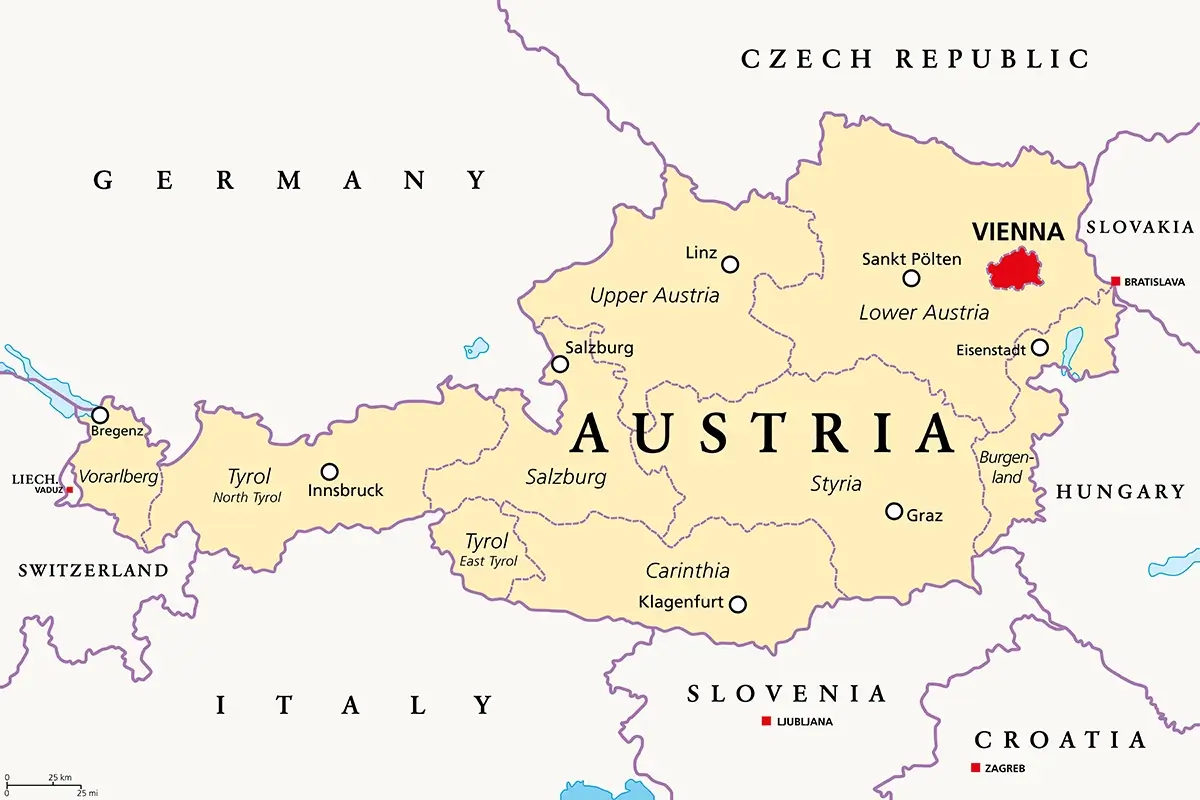
Fun Facts about Austria

Austria Grocery Store Guide

Top 16 Places to Visit

12 Best Things to Do on a Rainy Day in Vienna

Free Salzburg State Transit Ticket

Austria Summer Cards
Wanderlustria's Austria Trip Planning Service
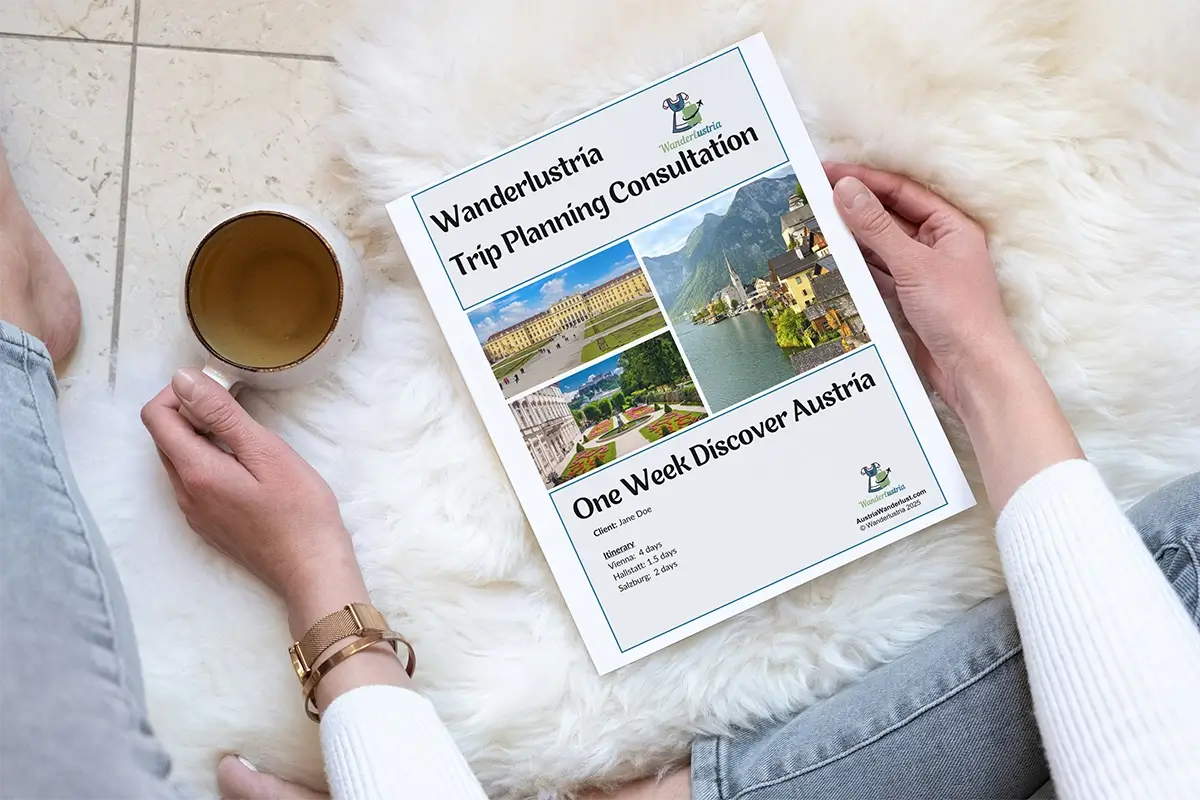
Expert advice to help you plan your Austria holiday.
Book an Austria Trip Planning Consultation
We help you plan your dream Austrian holiday.
The Wanderlustria Trip Planning Service provides advice on everything you need to know about planning your holiday to Austria- from hotels to tours, where to get the best tickets, train and road trips and share our favourite places and activities to ensure your Austria holiday is memorable.
Find the perfect Austria Travel Consultation for you
Trip Planning
Click on one of the topics below to start planning your dream trip to Austria.
Wanderlustria's Templates and Guides
Austria Trip Planner
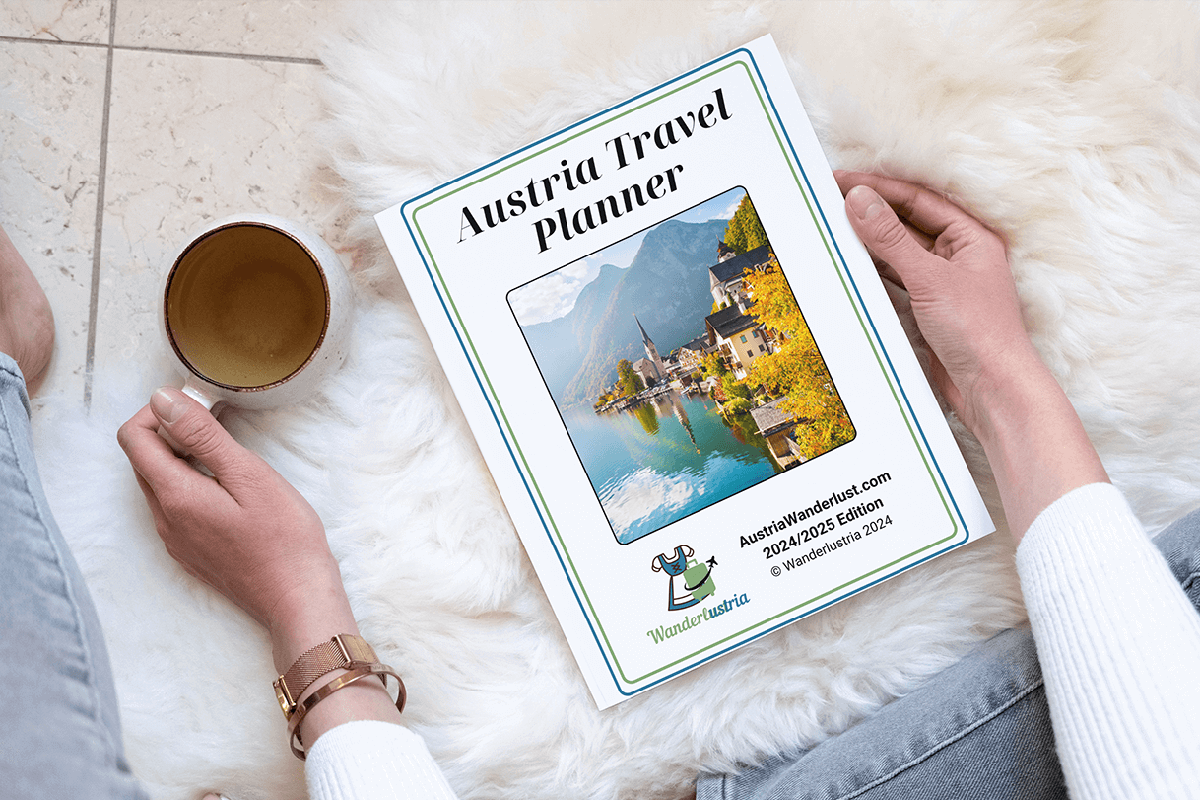
90+ page Austria trip planner printable includes customisable templates and checklists to help you research, compare, and organise every detail. From travel inspiration to planning logistics, this downloadable guide is your one-stop toolkit for the perfect Austrian holiday.
Start Planning Now
Vienna Christmas Market Itinerary

The Ultimate Vienna Christmas Markets Itinerary is a printable PDF guide with all the essential information and three day-to-day itineraries visiting the Best Vienna Christmas Markets.
Our 60+ pages guide has all the information you need to plan your Vienna Christmas Markets Holiday- from where to stay, to what are the best Christmas Market Foods and Souvenirs.
Buy Here
Visit our Shop for more information about Wanderlustria's Guides and Templates
Plan your Austrian Holiday
Plan your Austrian Holiday
Follow AustriaTravelPlanning by Wanderlustria
Chief Wanderlust’er and Austria travel expert, I’m on a mission to help you uncover the magic of Austria — from fairytale cities and alpine villages to awe-inspiring landscapes and rich cultural traditions.
As the founder of Austria Wanderlust Travel Planning, the Austria Travel Planning Facebook Group, and director of Wanderlustria eU, I provide trusted tips, local insights, and curated resources to make your Austrian adventure seamless, authentic, and unforgettable.

